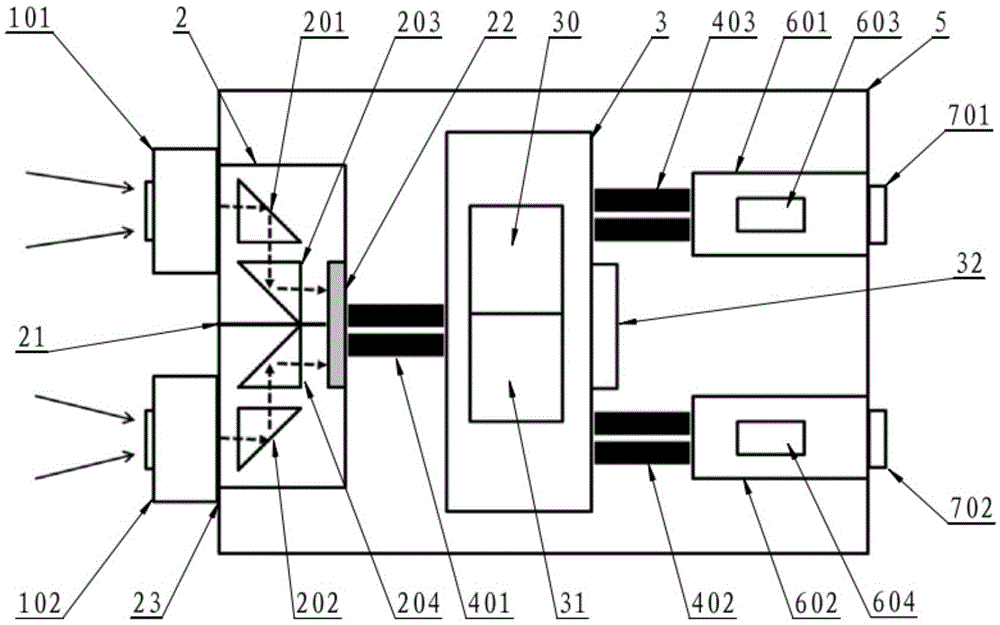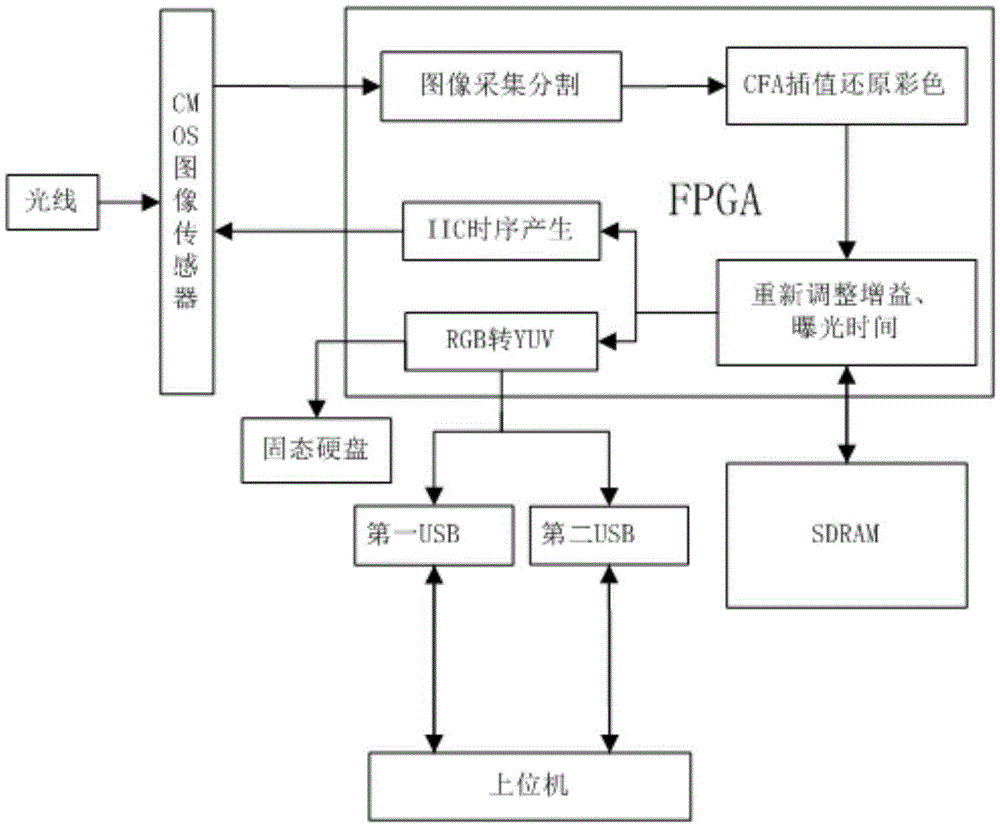Stereo vision camera with double-lens single sensor
A single-sensor, stereo vision technology, applied in stereo systems, image communications, electrical components, etc., can solve problems such as inconvenient image acquisition, low measurement efficiency, and high difficulty, and achieve simple image segmentation processing, improve measurement efficiency, and solve bulky effect
- Summary
- Abstract
- Description
- Claims
- Application Information
AI Technical Summary
Problems solved by technology
Method used
Image
Examples
Embodiment Construction
[0016] Specific embodiments of the present invention will be described in detail below in conjunction with the accompanying drawings.
[0017] Such as figure 1 Shown, a kind of dual-lens single-sensor stereo vision camera of the present invention, it comprises casing 5; The front end of described casing 5 is fixedly connected with first lens 101 and second lens 102; Described first lens 101 and the second lens A filter 23 is installed behind the second lens 102 to filter out non-target light; the inside of the housing 5 is provided with a light collection module 2, a core image processing board 3, a first image data transmission communication board 601 and a second image data Transmission communication board 602; the light collection module 2 is fixed at the front end inside the housing 5, and the light collection module 2 and the core image processing board 3 are connected through the first board-to-board connector 401; the first image data transmission The communication boa...
PUM
 Login to View More
Login to View More Abstract
Description
Claims
Application Information
 Login to View More
Login to View More - R&D
- Intellectual Property
- Life Sciences
- Materials
- Tech Scout
- Unparalleled Data Quality
- Higher Quality Content
- 60% Fewer Hallucinations
Browse by: Latest US Patents, China's latest patents, Technical Efficacy Thesaurus, Application Domain, Technology Topic, Popular Technical Reports.
© 2025 PatSnap. All rights reserved.Legal|Privacy policy|Modern Slavery Act Transparency Statement|Sitemap|About US| Contact US: help@patsnap.com


